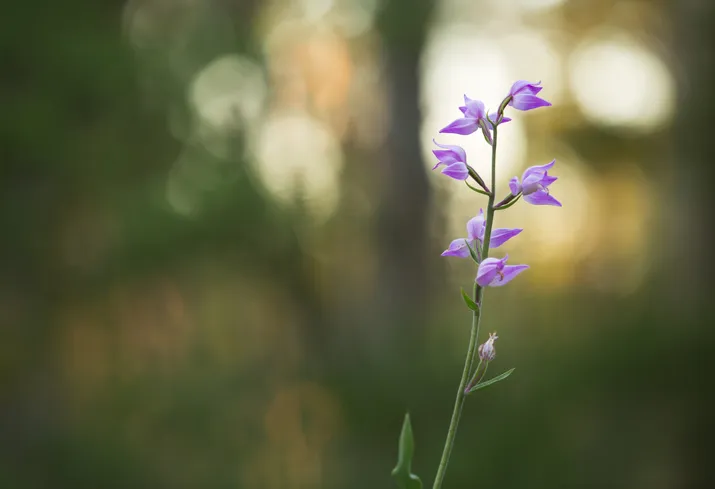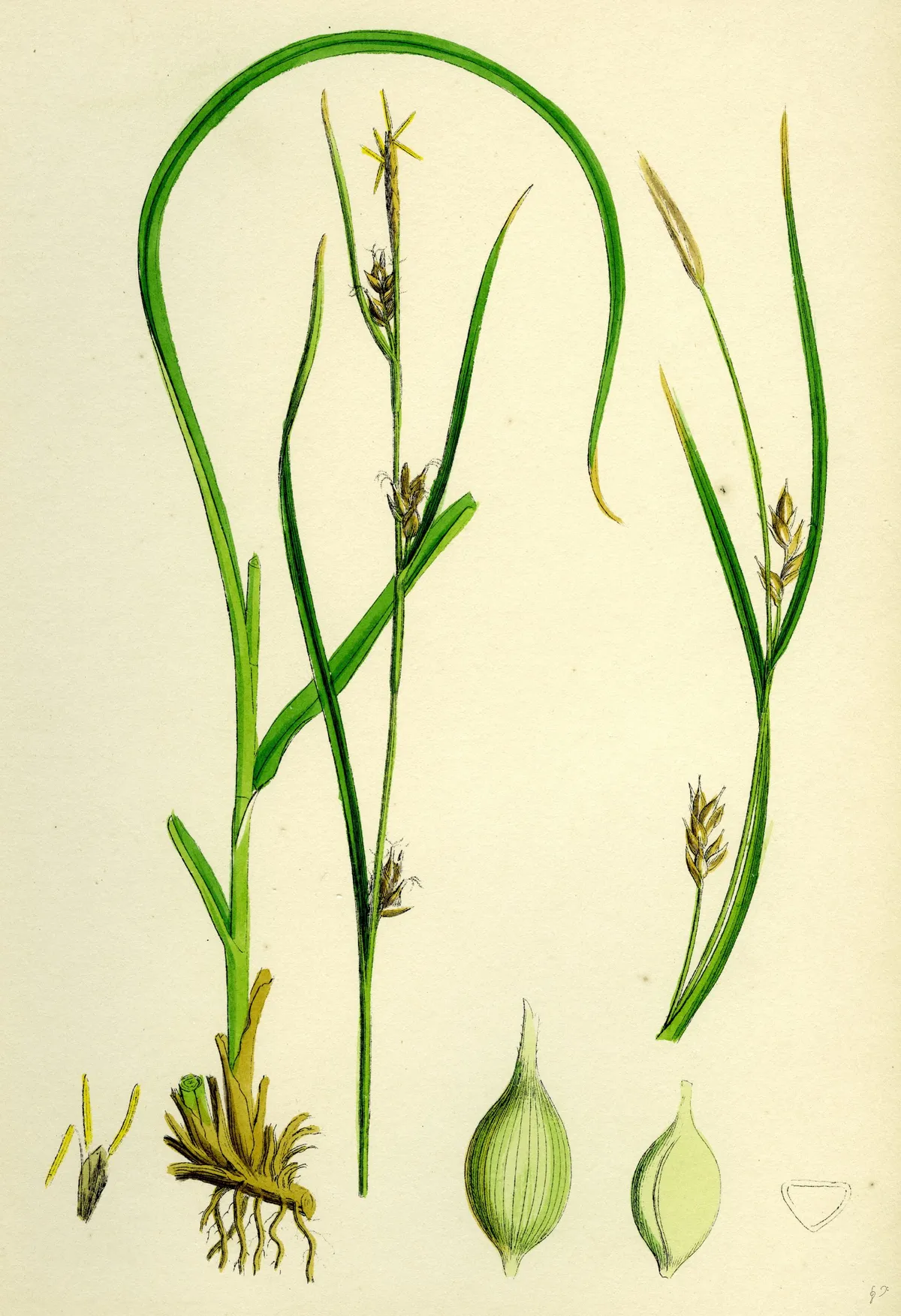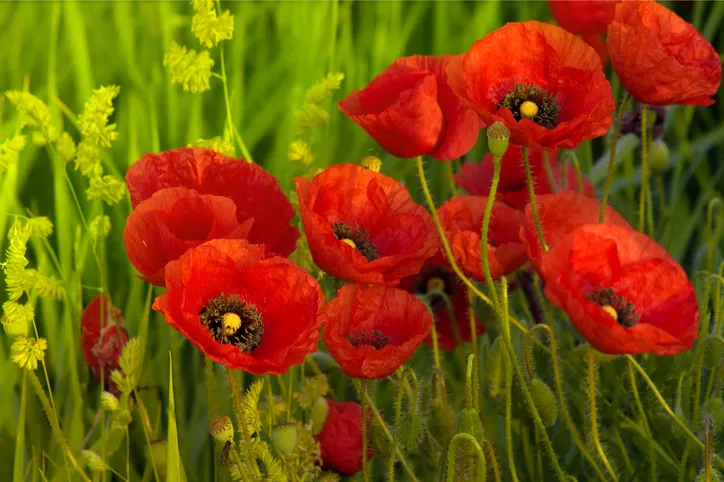Learn how to identify some of the UK's rarest flower species and the environmental threats that they face in our expert guide.
Rarest flowers in Britain
1
Red Helleborine

An extremely endangered orchid, which is now only known to be at three sites in the UK. Inhabiting deciduous woodlands this orchid requires chalky alkaline soil.
Flowering at some point during May - July it has dark green leaves with 12 pink/purple flowers on one long spike. The Red helleborine is classified as critically endangered in Britain and methods of germination and propagation to conserve the species are currently being looked into.
2
Starved wood sedge
Only two colonies of the starved wood sedge currently exist; in two secret locations in Surrey and Somerset where there are a total of around 60 plants. The condition of this grass-like plant has been classed as critical. With it’s long leaves and tall flowering stems it can easily be mistaken for common woodland grass.
Although it has never been common, the plant had declined to just one 15 years ago. A rare step has been taken by Plantlife, as they have reintroduced the plant to Charterhouse School in Surrey, where it was once found.
Due to the critical condition of the plant's existence, the organisation felt it would not survive if they didn’t throw it a lifeline. Since the reintroduction the plant is doing well in the school's woods.

3
Poppy

Poppies are colourful flowers with very delicate, tissue like petals. You are most likely to find them flowering from June – September, and they grow from 20-60cm high.
Although once very common flowers, the common red field poppy are now sadly under threat. The changes in agriculture over the years have meant that certain weed-killers have lead to a rapid decline in some flowers.
4
Ribbon-leaved water-plantain
Confined to just two locations in the UK, it can be found at a lack in Worcestershire and a drainage channel in Lincolnshire. It had recently been recorded at two other sites in the UK but has since disappeared from both of these.
The aquatic plants population changes throughout the year, with reasons for this being largely unknown. Most common throughout June and July the plant is now part of a species recovery programme, which looks at the feasibility of reintroducing the plant into previous sites.
5
Lady’s slipper orchid

Once widespread in Europe and Asia, forest clearance and uprooting from orchid collectors have left this species almost completely wiped out in England in the 20th century.
This extremely rare and beautifully striking plant varies slightly in colour from plant to plant, but usually has claret or maroon-coloured sepals and petals with a yellow labellum (a type of petal). The orchid grows to around 12cm tall.
This orchid was thought by many to be extinct in 1917, but was then found in 1930 by amateur naturalists, growing in a remote valley. There it continues to survive under the watchful care of Natural England.
The Lady's Slipper flowers at the end of May and the beginning of June, so keep your eyes wide on your next trip into the countryside.
